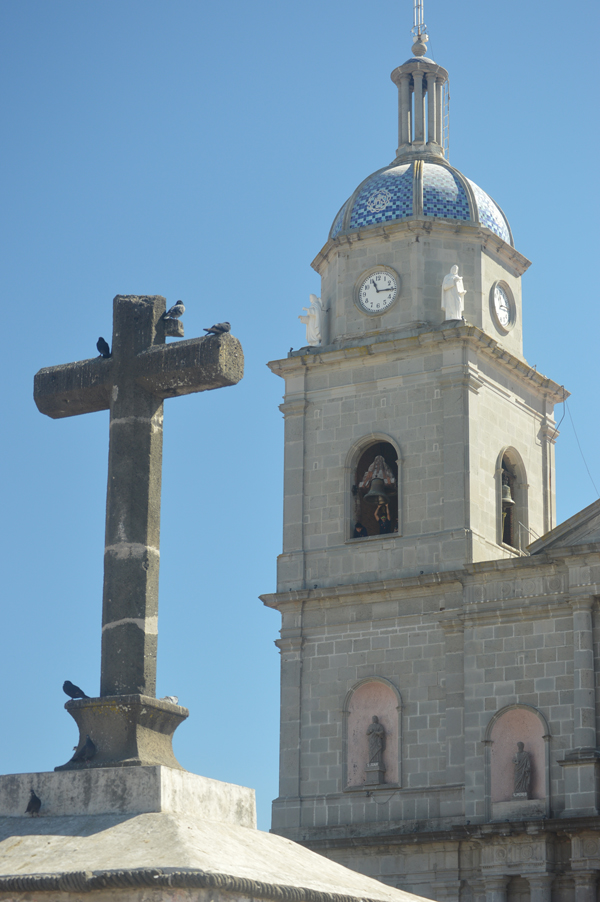
Above the church in the plaza where all this happens.
CANDELARIA
A trip to Tuxpan near Colima in southern Jalisco.
Día de la Candelaria or Candlemass is celebrated in Mexico on February 2nd. It is a religious and family celebration. Throughout the country on this date people dress up figures of the Christ Child and take him to the church to be blessed, as well as getting together with family and friends to eat tamales.
In central Mexico, people dress up a baby Jesus figurine and take it to mass before placing him in a niche where he will “live” for the remainder of that year. This can be in someone’s house or in a church and it is considered a high honor to be chosen as the baby Jesus guardian. The hosts for baby Jesus usually have to be open for visitors most of the time and have to share their food with those who come see him.
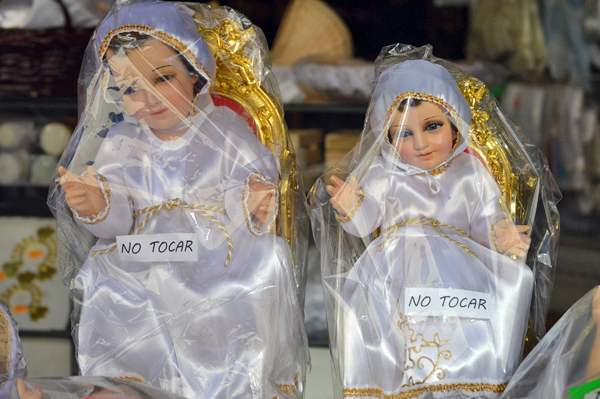
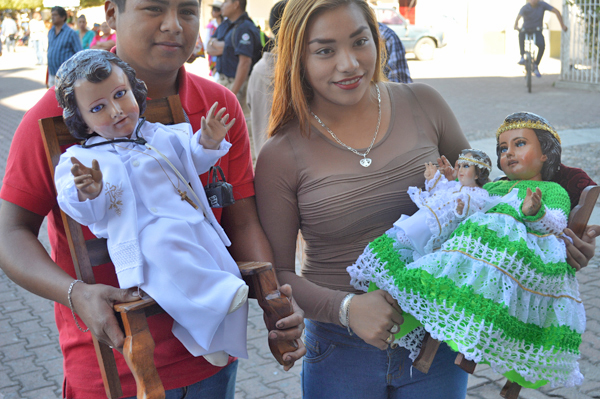
Below – In the plaza as a preliminary were figurines showing the various costumes. Each neighborhoods spends much time creating the costumes, making masks, and practicing.
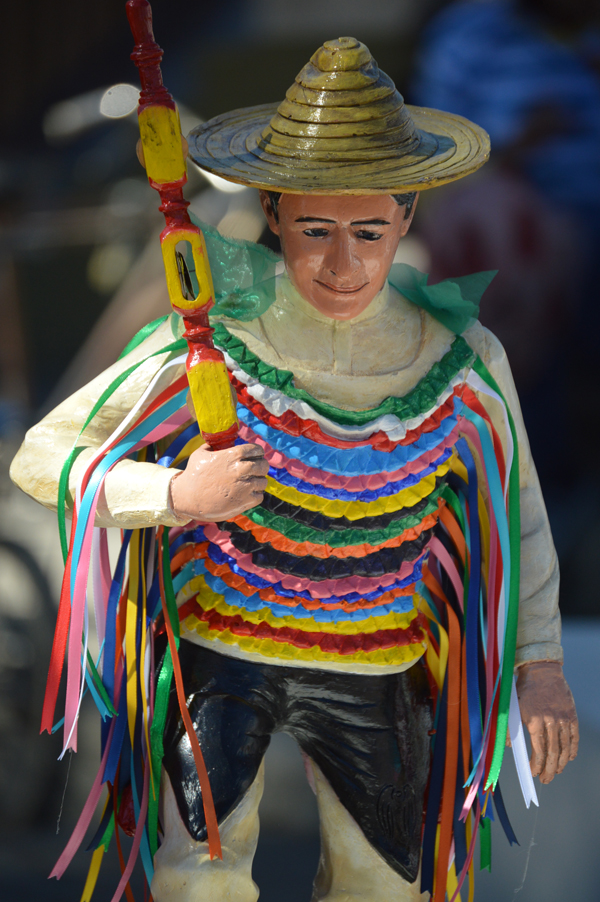
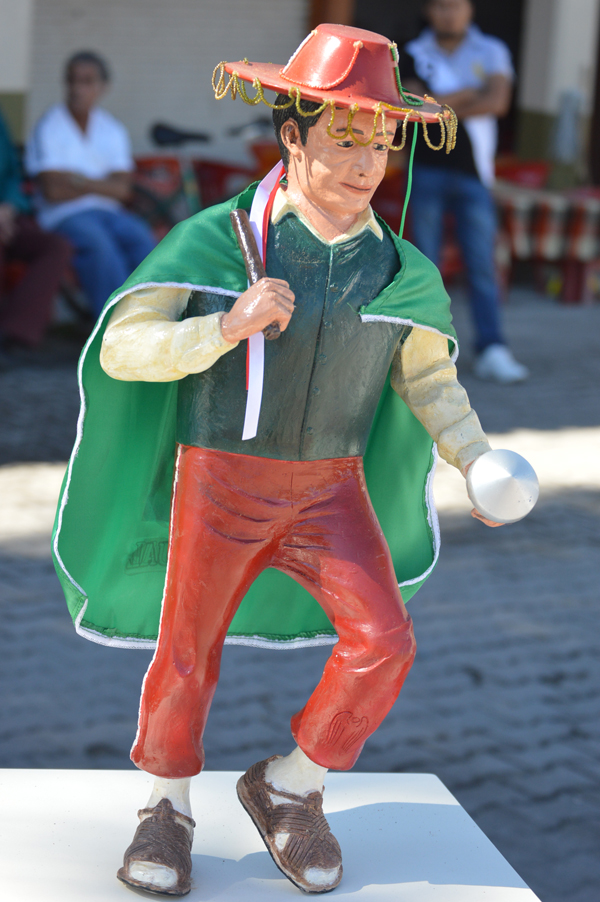
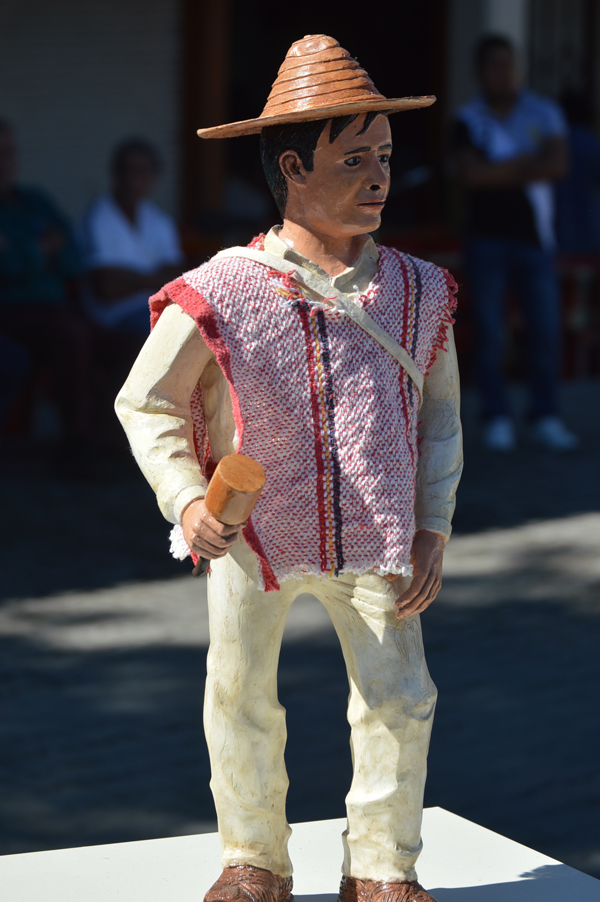
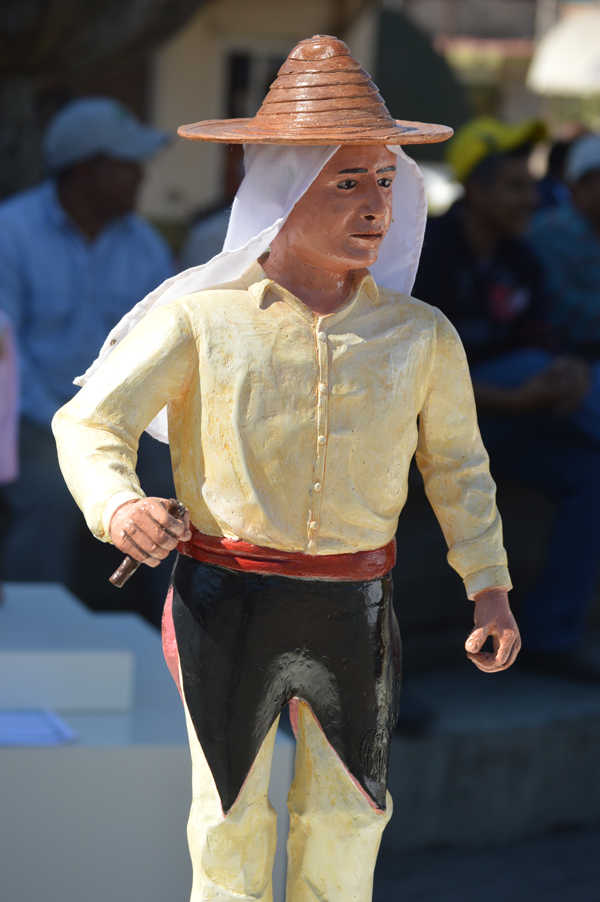
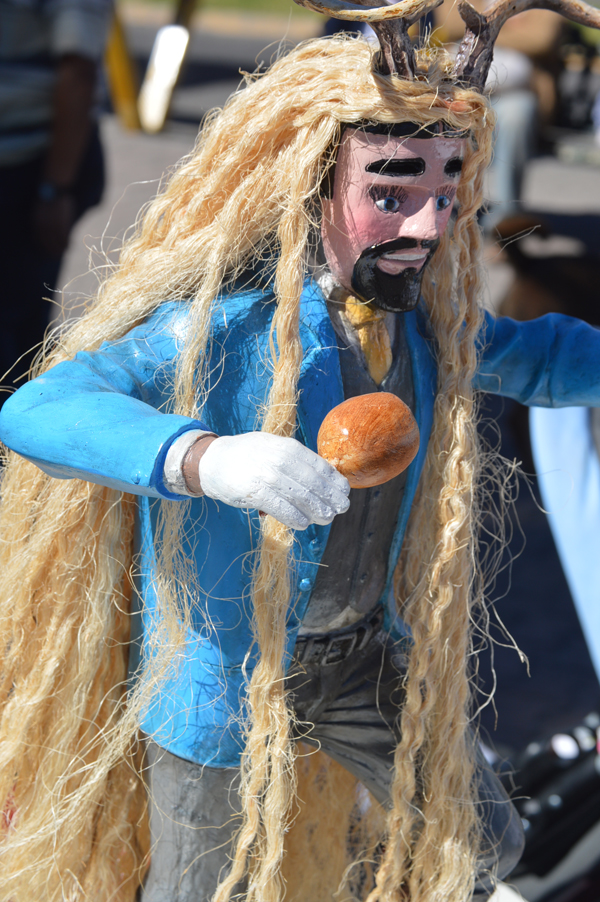
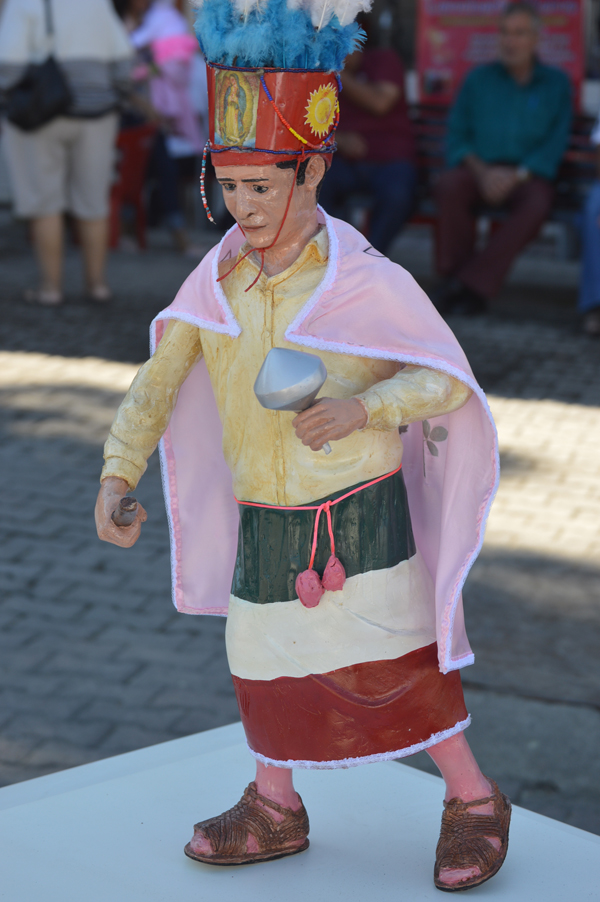
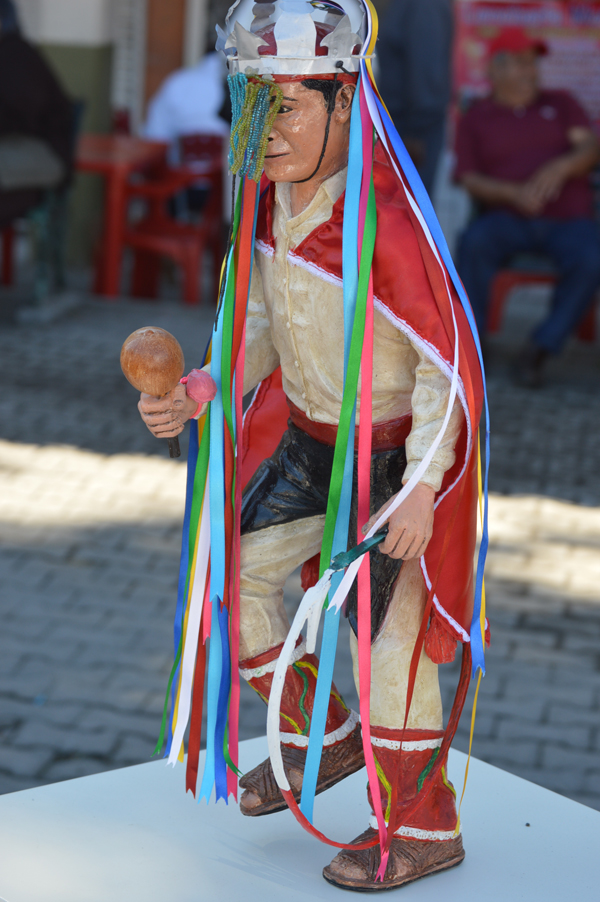
Below-In to the plaza enters the real thing. Los Seneros the warriors.
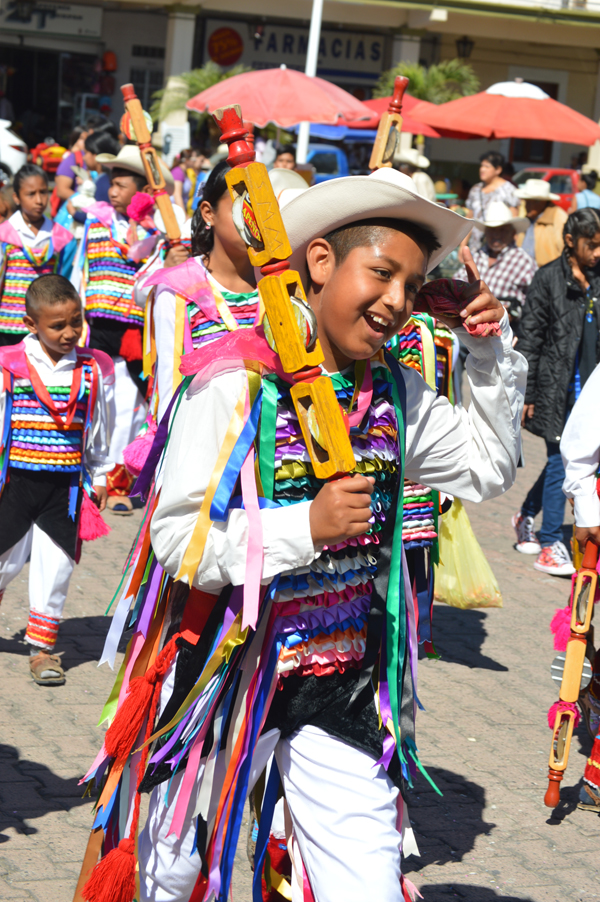
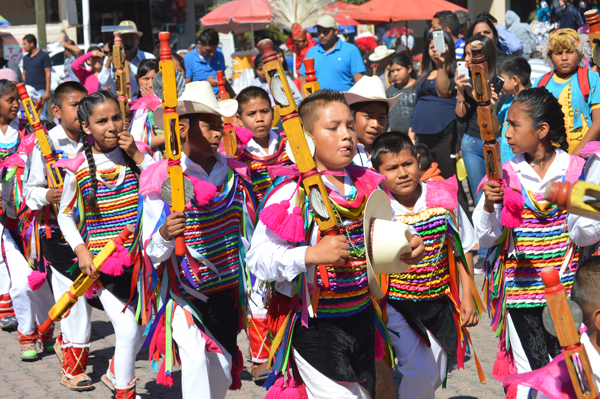
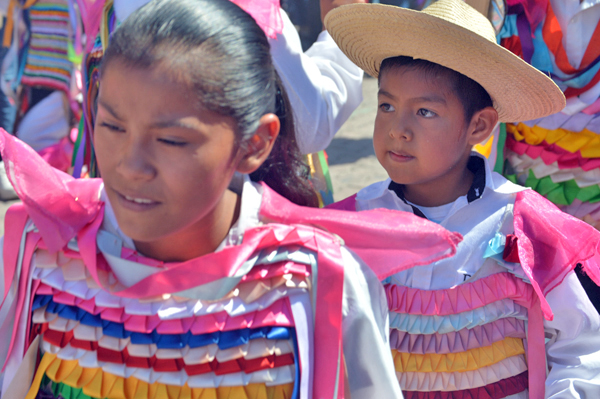
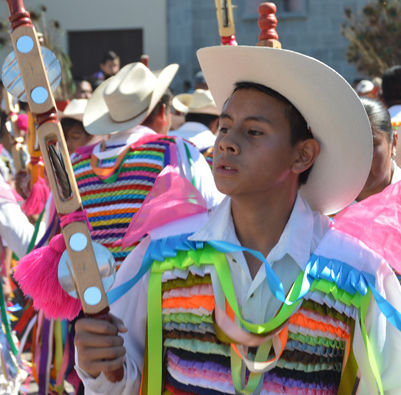
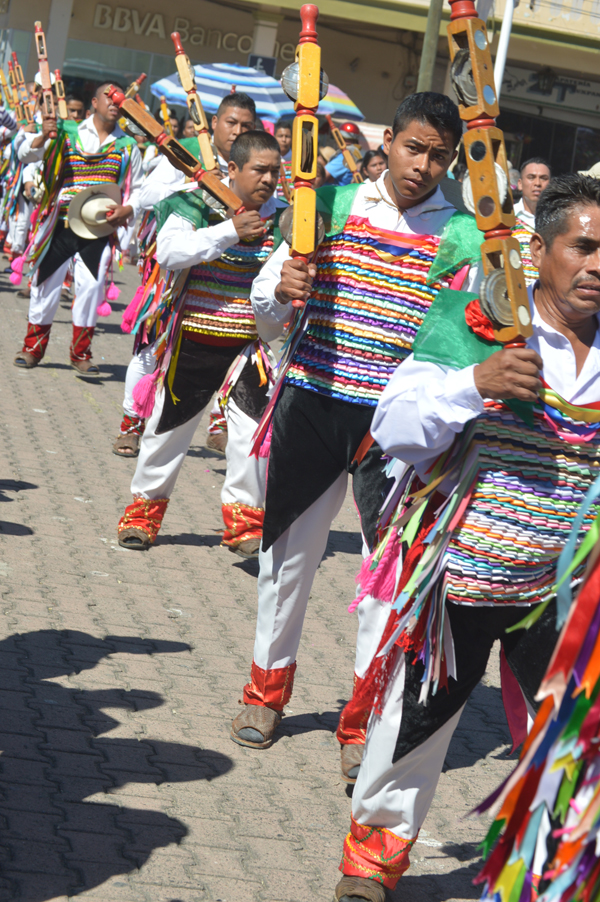
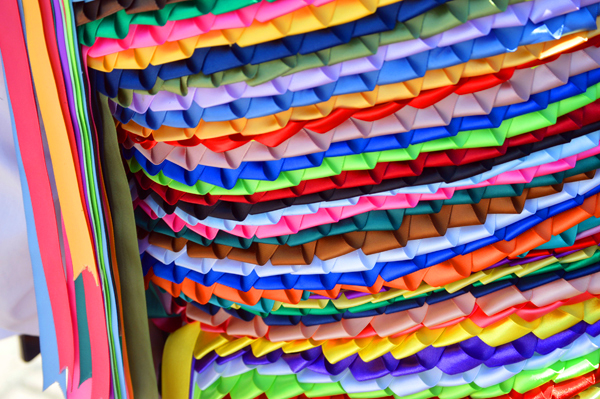
These guys below are called Chayacates wearing long sometimes blonde (in this case blue) “hair” with their Spanish faced masks and antlers. The horns represent evil (of the conquistadors) . In the the native Nahuatl language the word Chayácatl means “man wearing a mask.” These are thinly veiled references to the Spanish. It was a dance that was a way the indigenous people could safely ridicule their oppressors.
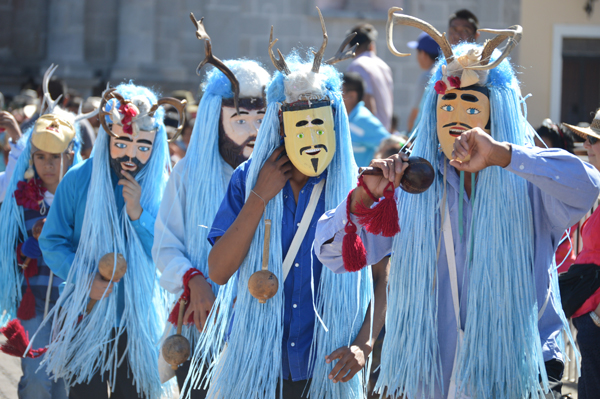
Great pains are taken in assembling these costumes and practicing the dance routines. The whole affair is NOT for tourists and seemed to be by, for, and about the local people. Apart from our group of eight I saw no other gringos at all-and from my experience this is not unusual for these events to go completely unnoticed by the gringos who live in this country.
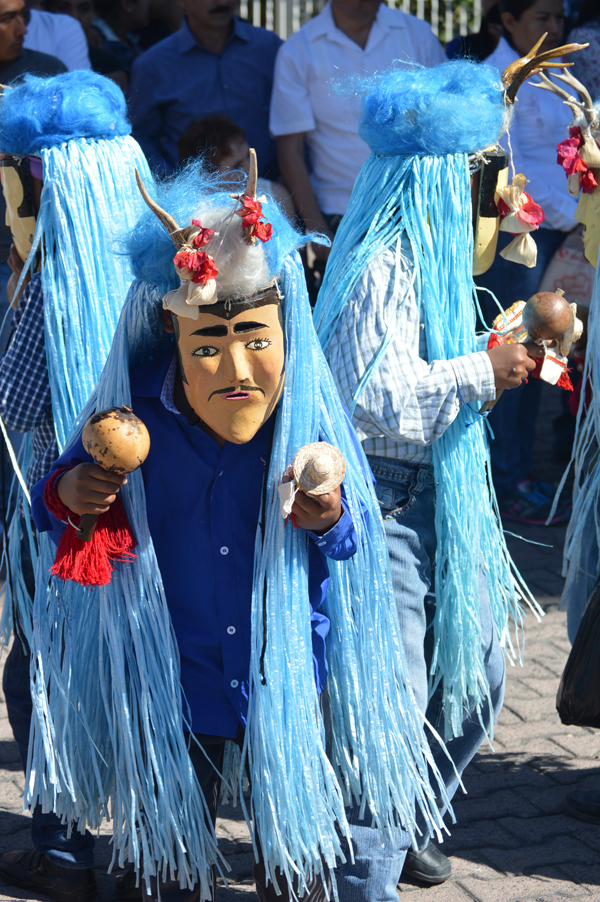
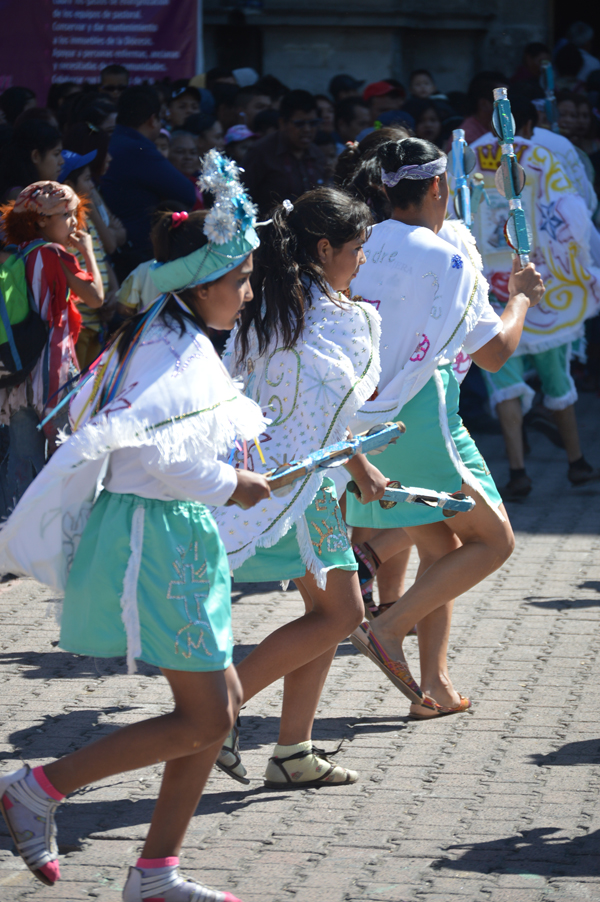
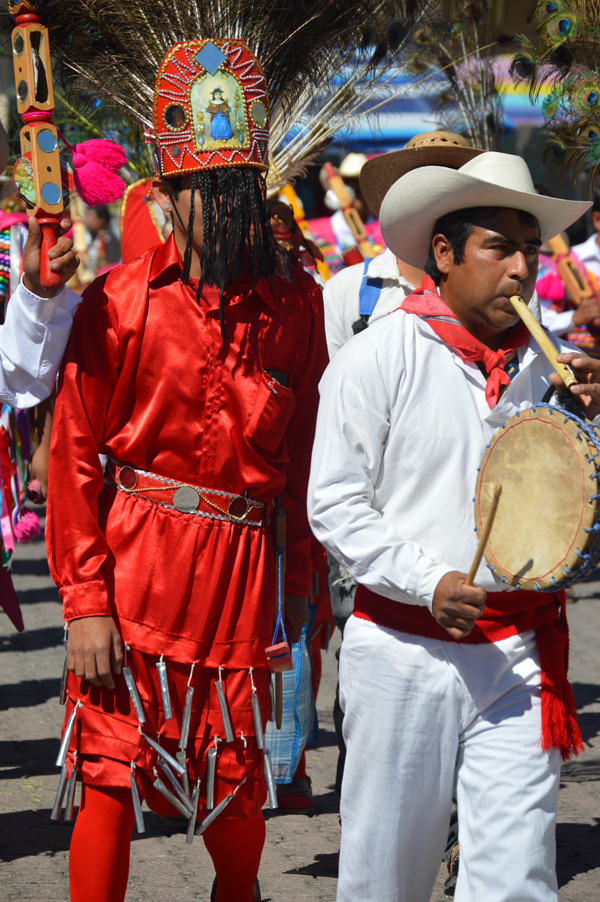
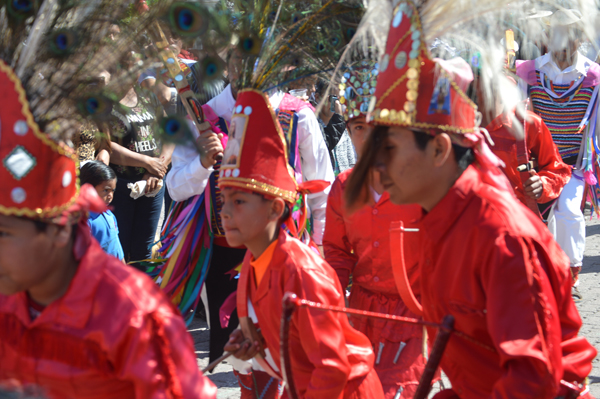
Above-the red costume is of Spanish origin in their battles with the “Moors”.
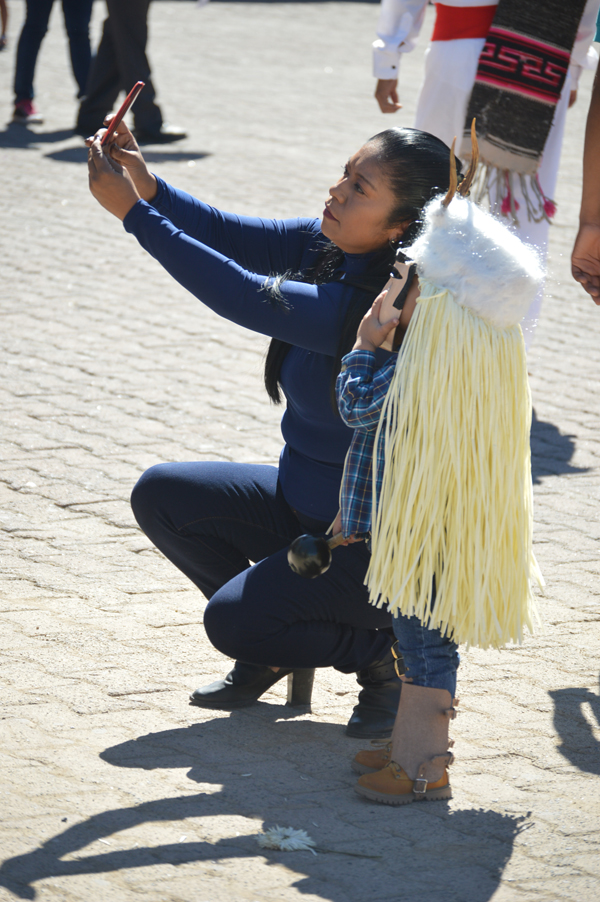
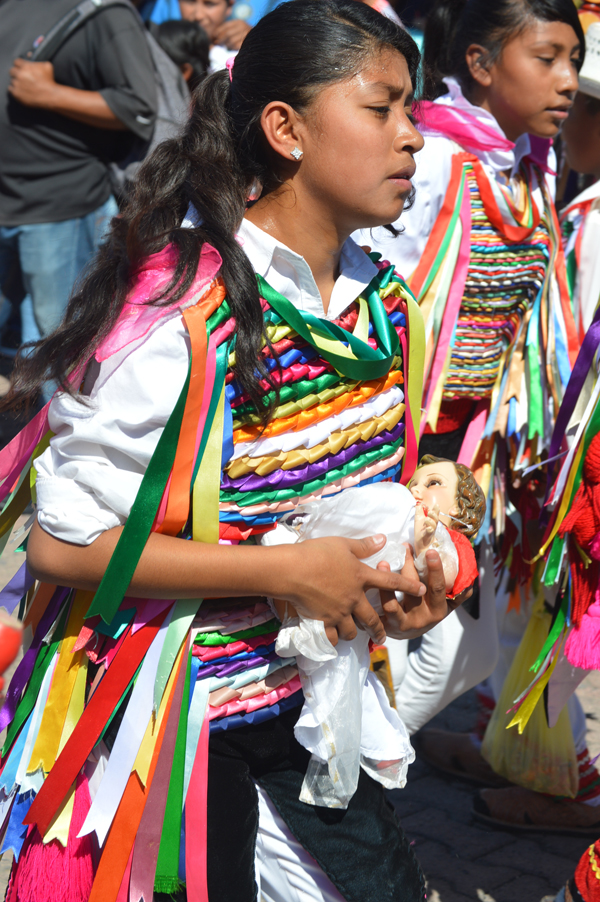
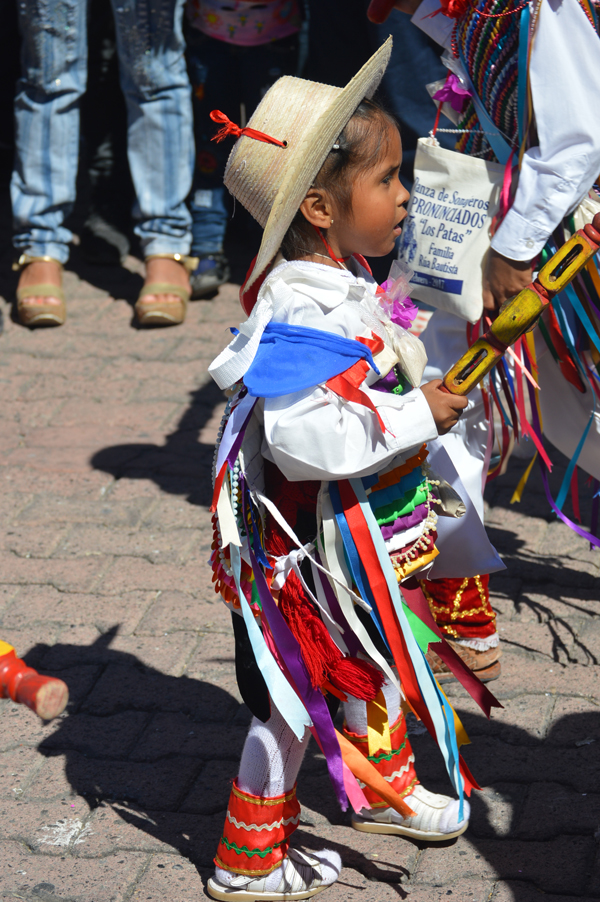
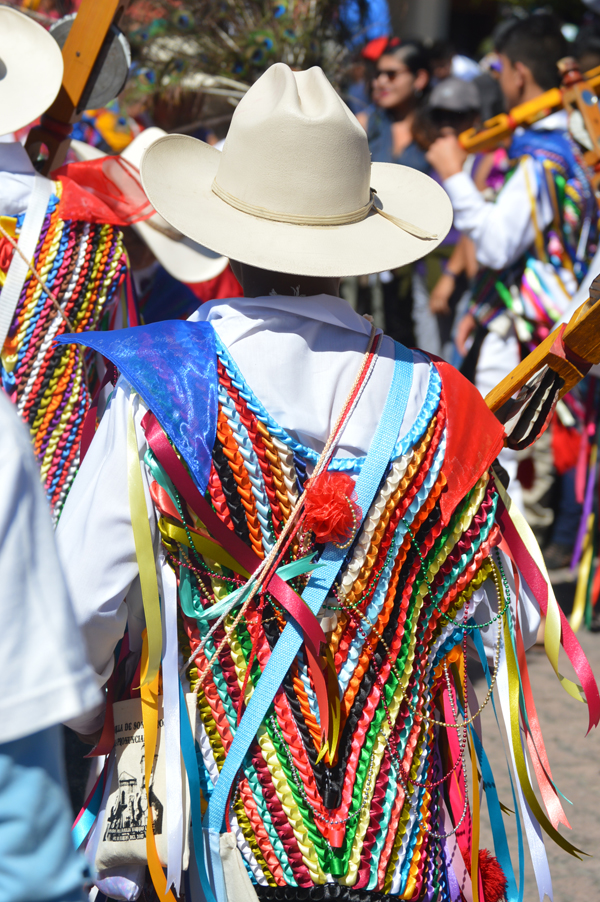
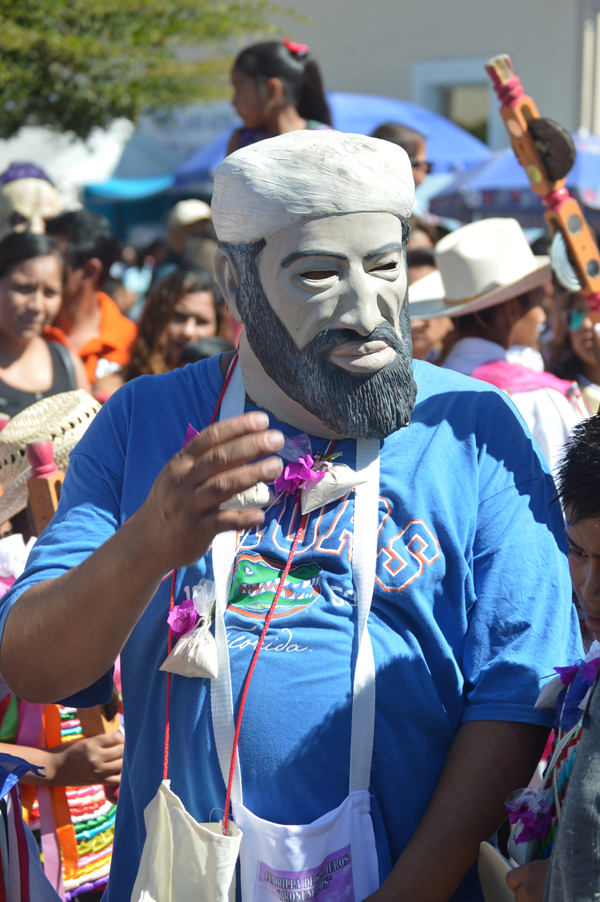
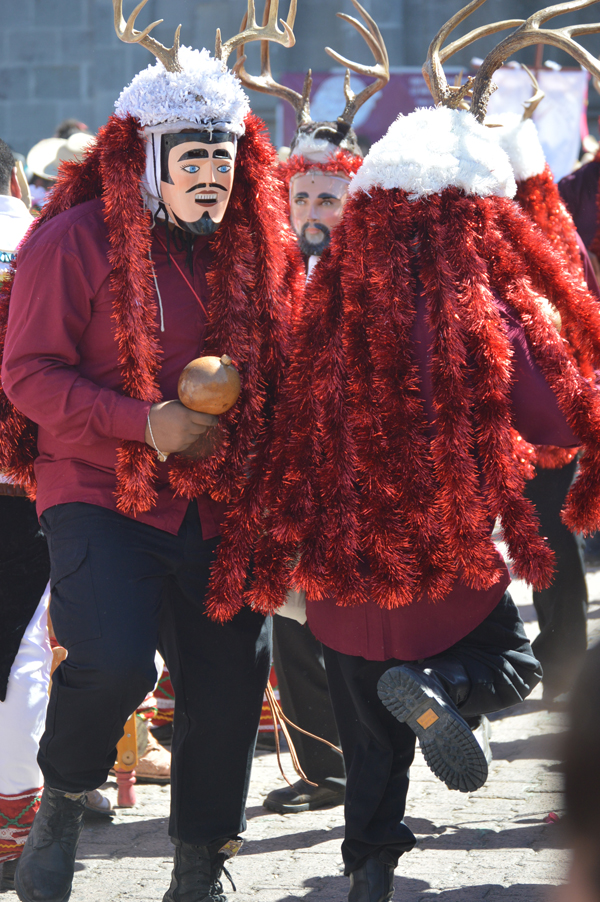
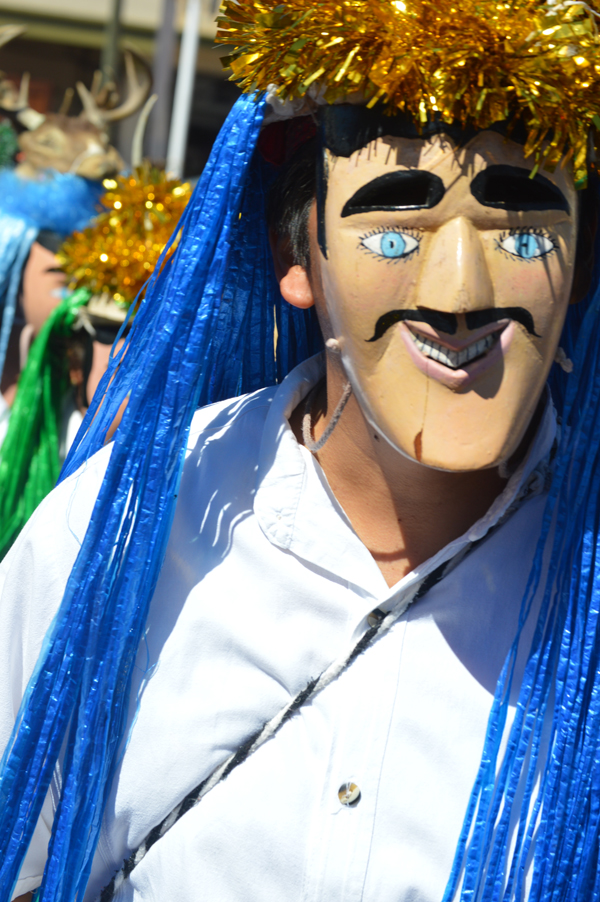
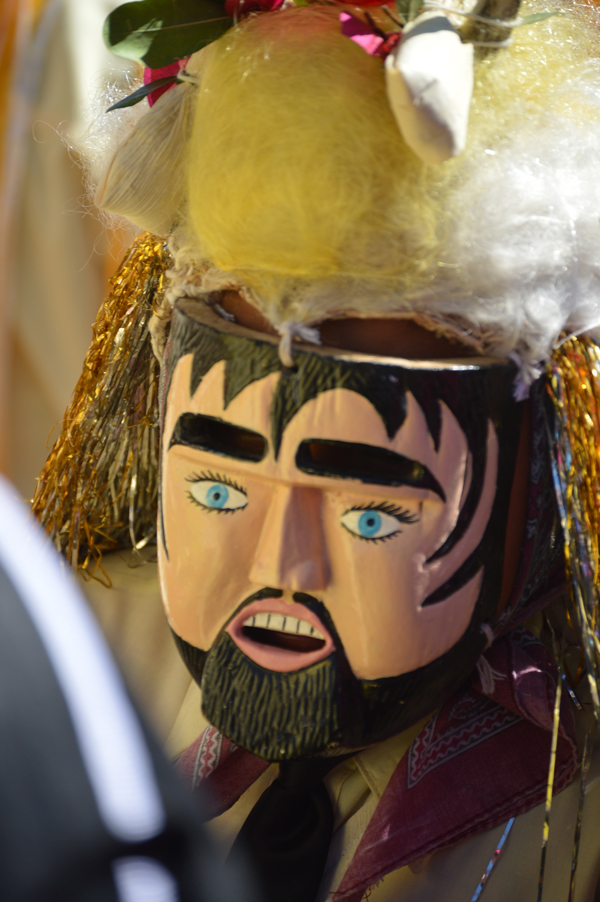
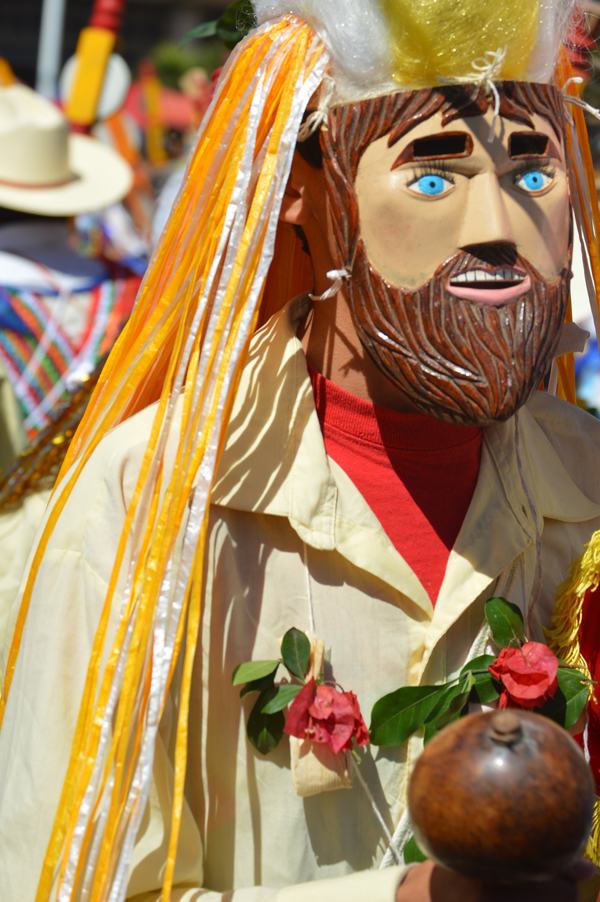
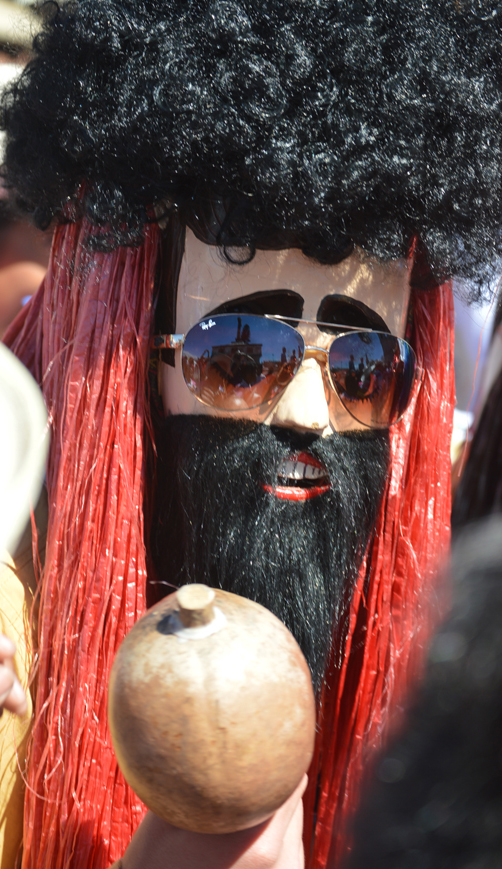
Below- all manner of devils and grotesques are at hand to clear the way. Usually a “Guegue” (gway-gway) goes before the dancers to drive away evil spirits.
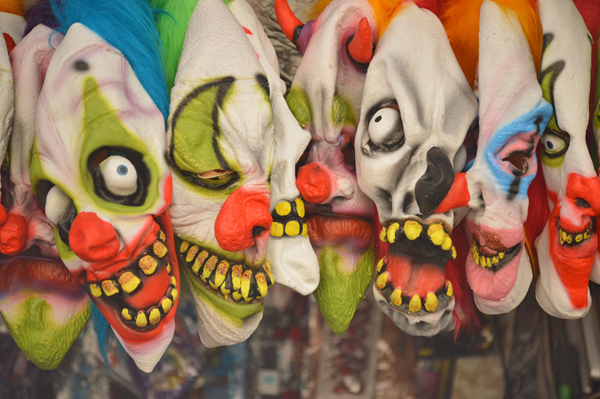
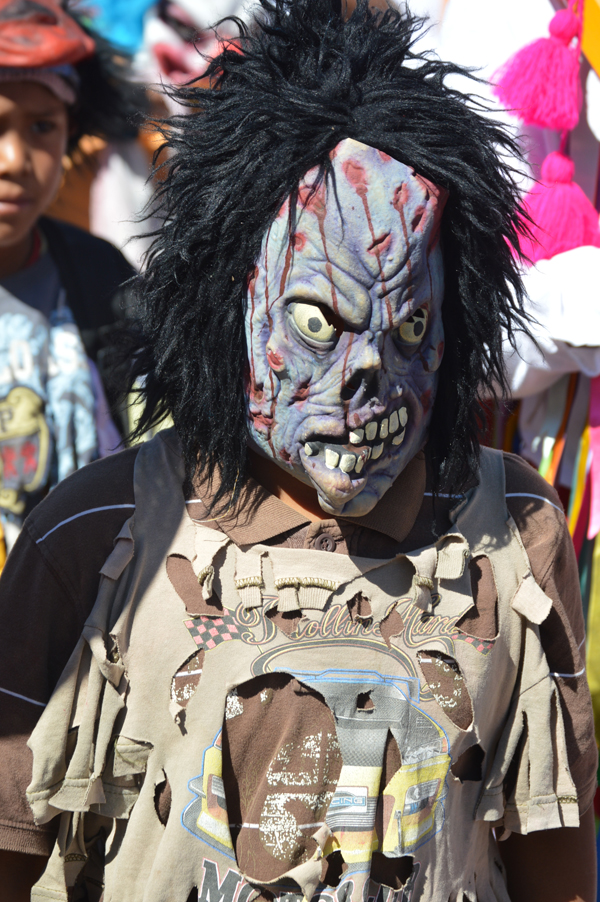
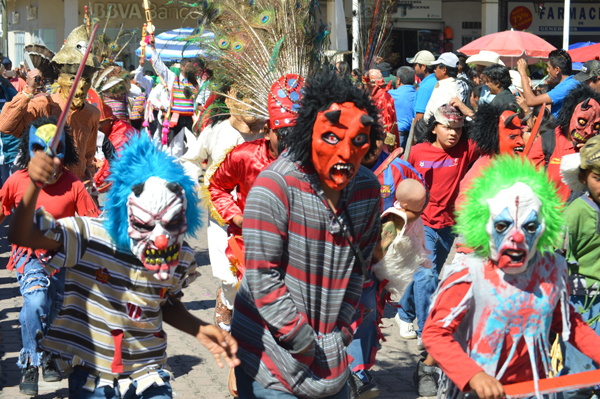
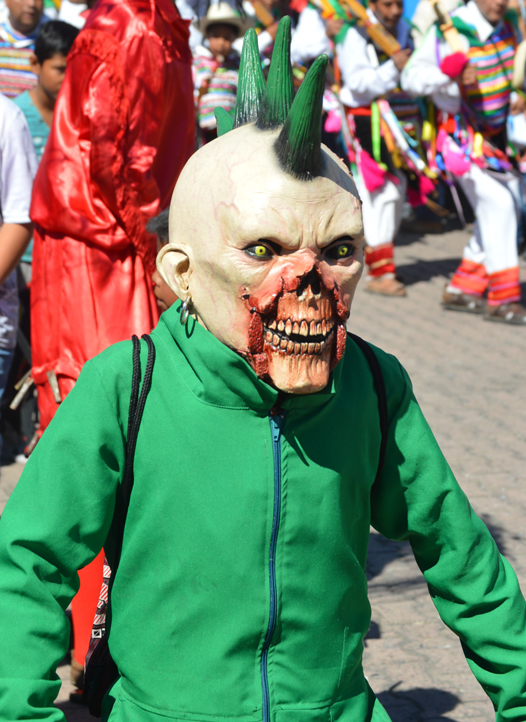
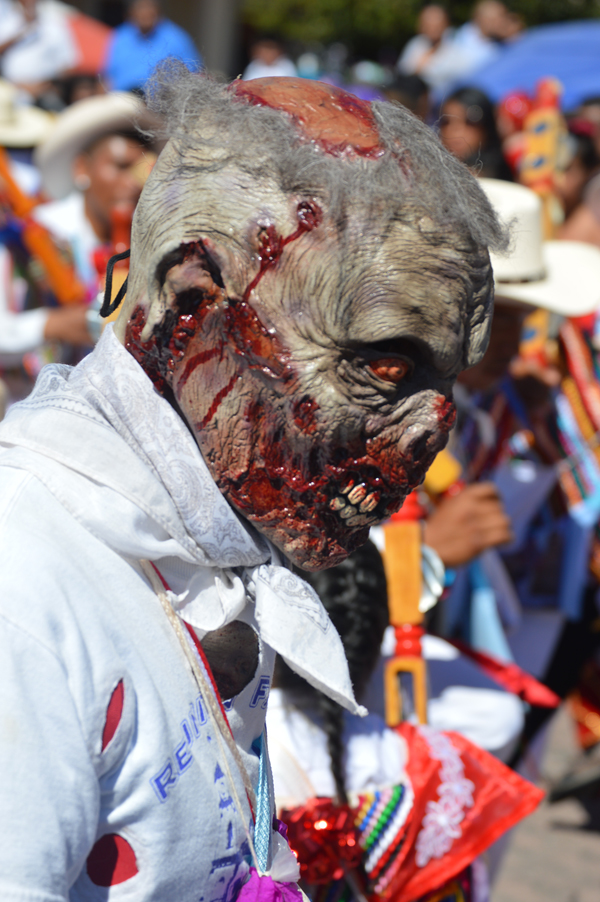
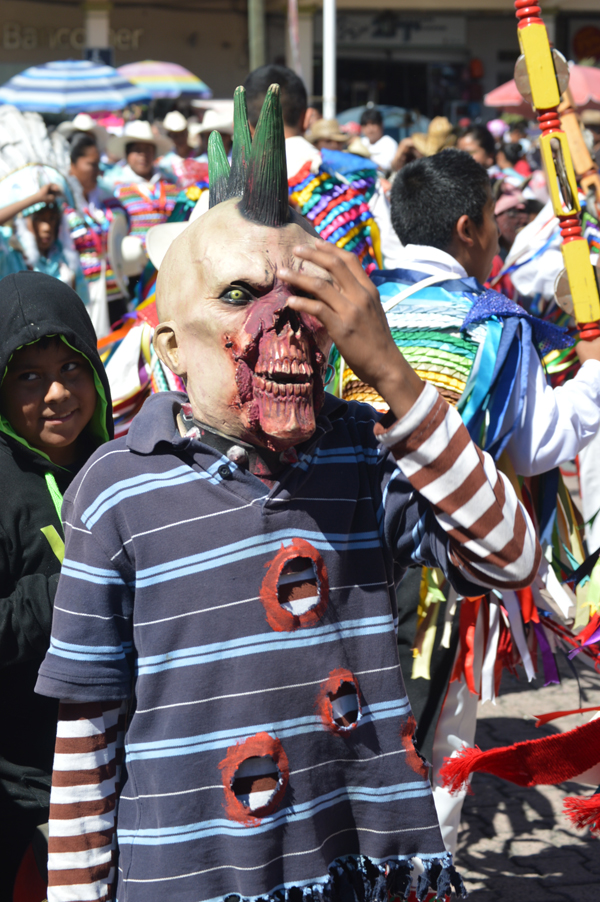
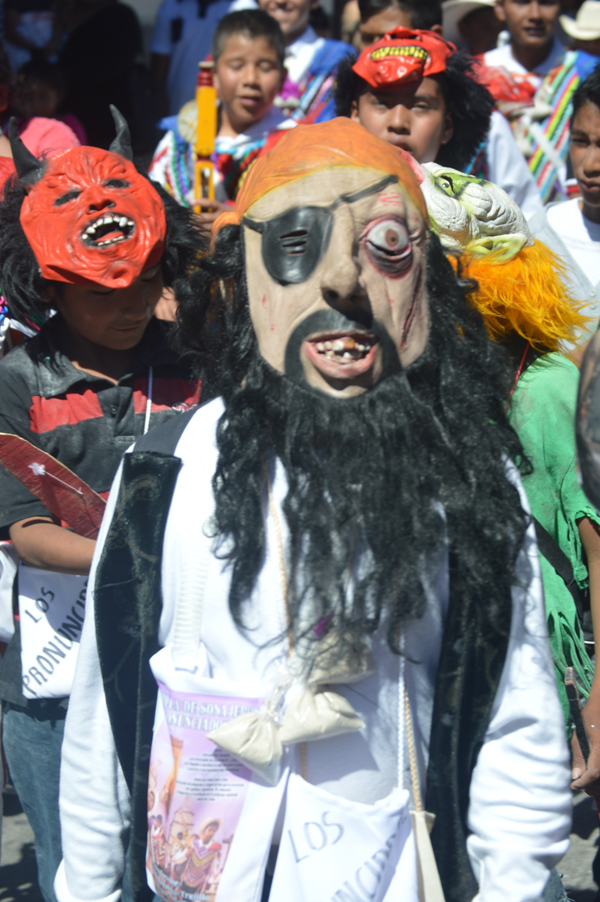
Below– Saint Sebastian gets brought out of the church and paraded as the town patron saint.
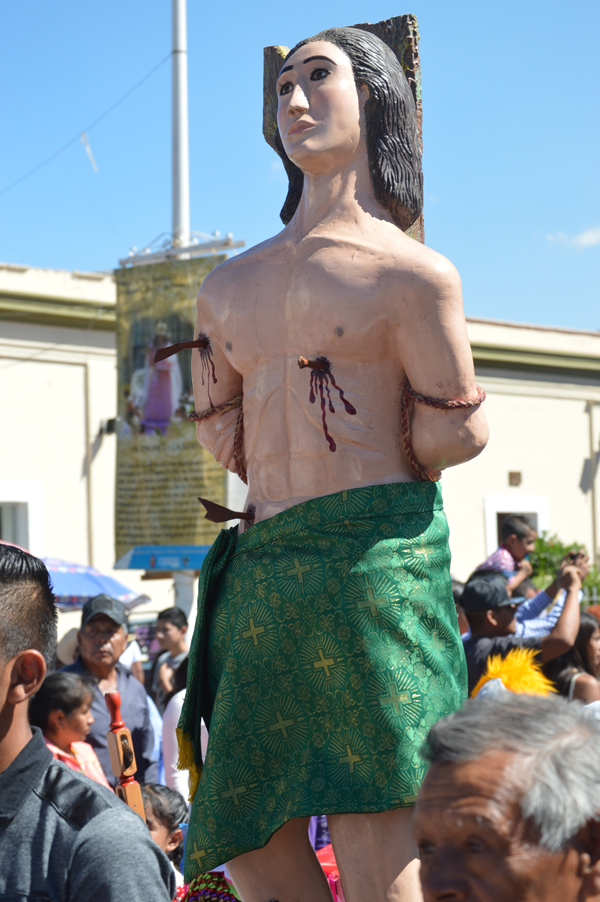
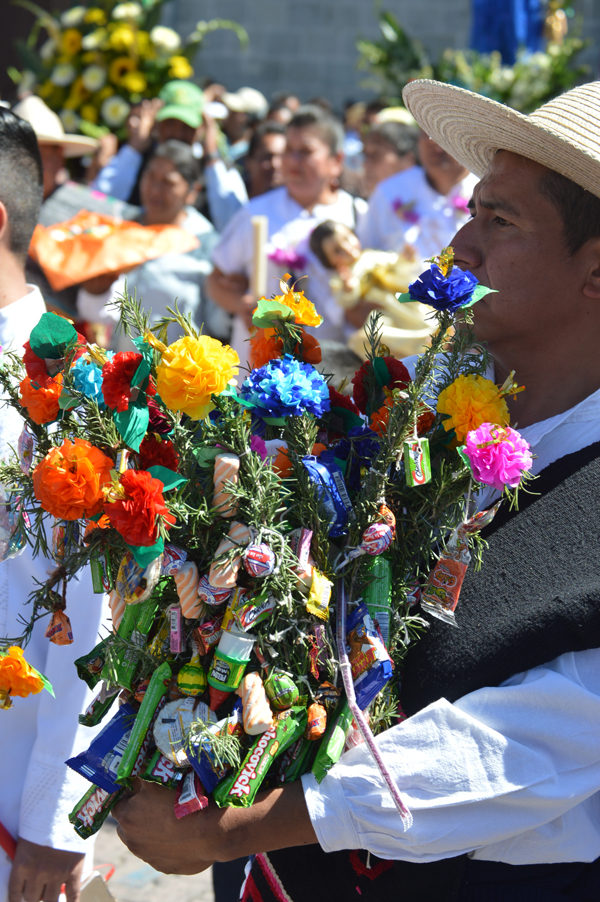
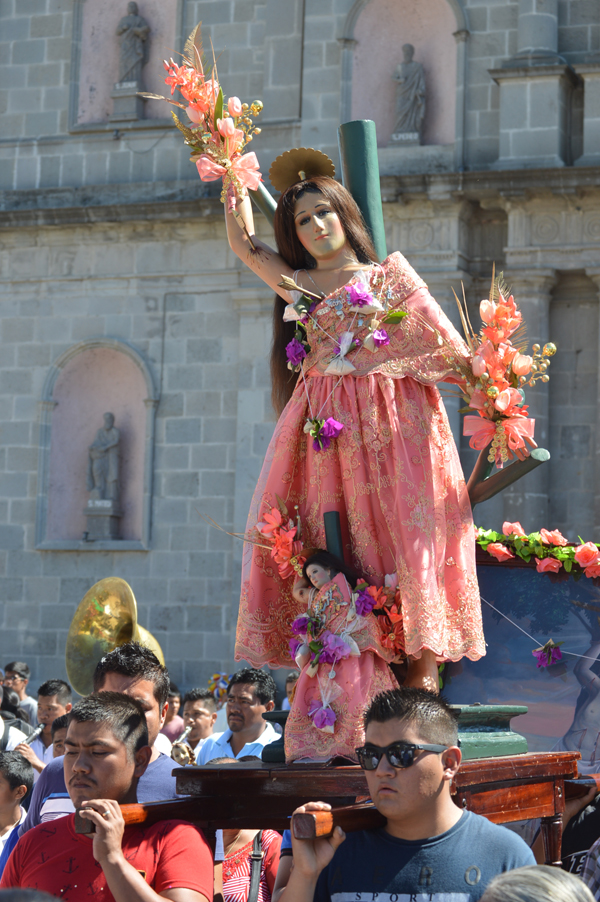
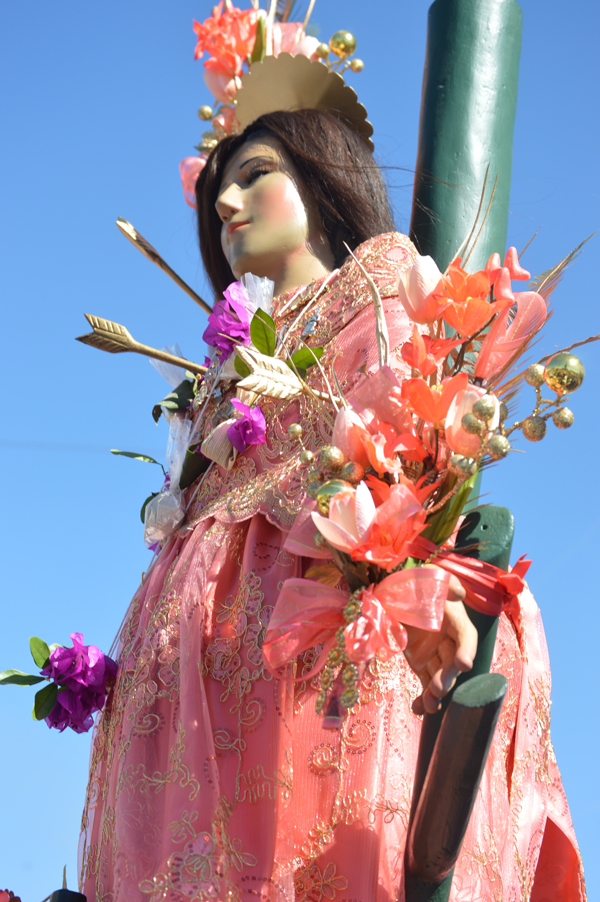
After about an hour all the many groups with their distinctive dress were parading up and down the plaza before going back to their respective neighborhoods. Each group had tambourines, rattles and drums and even horns. Under the hot sun it was a cacophony of sound and swirling movement not captured well in these still photos. There is however a you tube video which shows highlights and how the quiet square gradually fills becoming a noisy swirling cacophony toward its conclusion.
For more about this event see mi amigo Jim Cook’s blog here.
As a footnote I would say that one would never see this kind of event up north. The traditions here are alive and well and those happily involved in them range from young children to grandparents. There is continuity and cohesion not just of traditions but also of the family and tribal or neighborhood